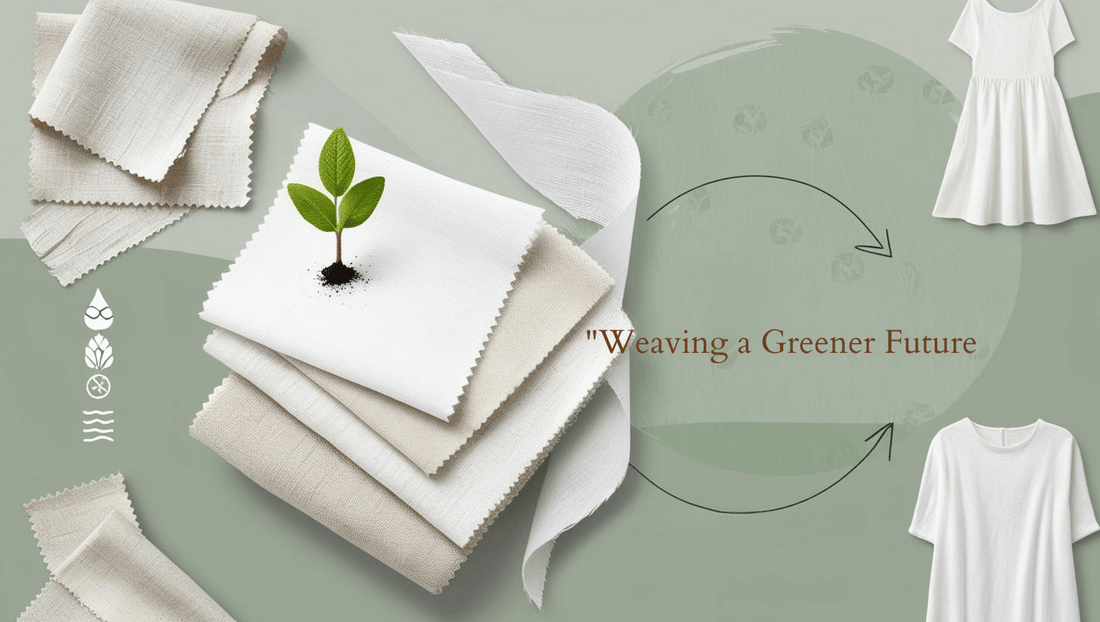
Sustainable Fabrics, Sustainable Finances: Crafting a Greener and Wealthier Future
In today’s world, sustainability is a key principle shaping the way we live, work, and spend. Whether it’s the materials we choose for our clothes or the way we handle our finances, people are increasingly looking for ways to live in harmony with the environment while securing their financial future. One exciting way these two concepts—sustainable fabrics and finances—come together is through the idea of eco-conscious living. By choosing sustainable fabrics and applying similar principles to our financial habits, we can not only help protect the planet but also ensure a more secure and prosperous future.
The Role of Sustainable Fabrics in a Greener Future
Sustainable fabrics are materials produced with minimal environmental impact. This could mean fabrics made from organic cotton, hemp, bamboo, or even recycled materials. These fabrics are grown and produced without harmful chemicals and are often biodegradable, reducing waste and the use of synthetic materials that contribute to pollution.
For example, organic cotton is grown without synthetic pesticides, which reduces water pollution and protects the health of local communities. Hemp, another popular sustainable fabric, requires little water and no pesticides, making it a highly eco-friendly option. Similarly, fabrics made from recycled plastic bottles are helping reduce the waste that would otherwise end up in landfills, turning waste into a resource. By choosing these fabrics, individuals can support companies that prioritize environmental responsibility and contribute to a greener future.
Moreover, sustainable fabrics tend to have a longer lifespan. Quality materials that are well-made last longer than their fast-fashion counterparts, meaning consumers can buy fewer clothes over time. This reduces the overall demand for production, which has significant environmental benefits in terms of reducing waste and energy consumption.
Sustainable Finances: How to Align Financial Habits with Sustainability
Just as sustainable fabrics reduce the environmental footprint of the clothing industry, sustainable financial practices can help secure a brighter future both personally and globally. Living sustainably isn’t just about purchasing eco-friendly products; it also includes how you manage your money. One important element of sustainable finances is ensuring that your investments and savings align with your values.
When thinking about sustainable finances, the first step is to examine where you’re investing your money. Ethical investing, also known as socially responsible investing (SRI), involves choosing companies or funds that prioritize environmental, social, and governance (ESG) issues. For example, investing in green energy companies or businesses that promote fair labor practices ensures that your financial growth doesn’t come at the expense of the planet or society. Sustainable investing is growing rapidly as more people become aware of the impact their investments can have.
But sustainable finances aren’t just about how you invest; they also include ensuring that your financial future is secure. For instance, making sure you understand how your retirement funds are managed, including how your pension contributions are taxed, is crucial. In the UK, pension tax rules in the UK can significantly impact how much you save for retirement. By knowing how to manage pension contributions and tax-free allowances, you can maximize your savings for the future, while ensuring that your funds are handled in an environmentally responsible way. For instance, many pension funds now offer ethical investment options that focus on sustainable businesses. This makes it easier than ever to align your retirement plans with your commitment to sustainability.
The Intersection of Sustainable Fabrics and Finances
When we think about how sustainable fabrics relate to finances, it’s clear that there’s a direct link between the choices we make in our day-to-day lives and the financial health we build over time. Buying fewer, better-quality products is both a financially sound and environmentally responsible decision. By investing in high-quality clothing made from sustainable materials, you may pay more upfront, but the long-term benefits—both for the planet and your finances—are undeniable.
In addition, sustainable businesses are beginning to focus on transparency in their financial practices, ensuring that the money you spend supports ethical practices and helps build a more sustainable world. This shift is not just happening in the textile industry but also across sectors, from energy to transportation. By supporting these businesses, you’re not just making a positive environmental impact; you’re also contributing to a thriving, sustainable economy.
Moreover, sustainability in both fabric choices and finances comes down to a broader mindset. A mindset focused on long-term planning, whether it’s for your clothing, your savings, or your retirement. This mentality encourages individuals to avoid the temptation of fast fashion, which is harmful to both the environment and your wallet. Similarly, it discourages impulsive financial decisions that can hurt your future financial security.
A Greener and Wealthier Future
The combination of sustainable fabrics and sustainable finances presents a unique opportunity to create a better future for both the planet and future generations. By choosing eco-friendly fabrics, practicing ethical investing, and making informed financial decisions, you are contributing to a world where the economy and the environment thrive together.
Living sustainably doesn’t require making drastic changes overnight. Small, thoughtful actions, like choosing sustainable fabrics, supporting ethical companies, and managing your finances wisely, can lead to significant positive changes. Over time, these actions can create a ripple effect, helping build a greener, more financially stable world for everyone.
Whether you’re thinking about your next clothing purchase or planning for retirement, remember that the choices you make today will affect both your financial future and the future of the planet. By crafting a future based on sustainability, we can ensure that both the earth and our bank accounts remain healthy for years to come.
In conclusion, sustainability isn’t just a trend—it’s a necessary shift in how we live, work, and plan for the future. By aligning your fabric choices with your financial habits, you can contribute to both a greener world and a more financially secure future. So, take a step today—whether it's with your wardrobe or your pension—and start crafting a future that's both sustainable and prosperous.

